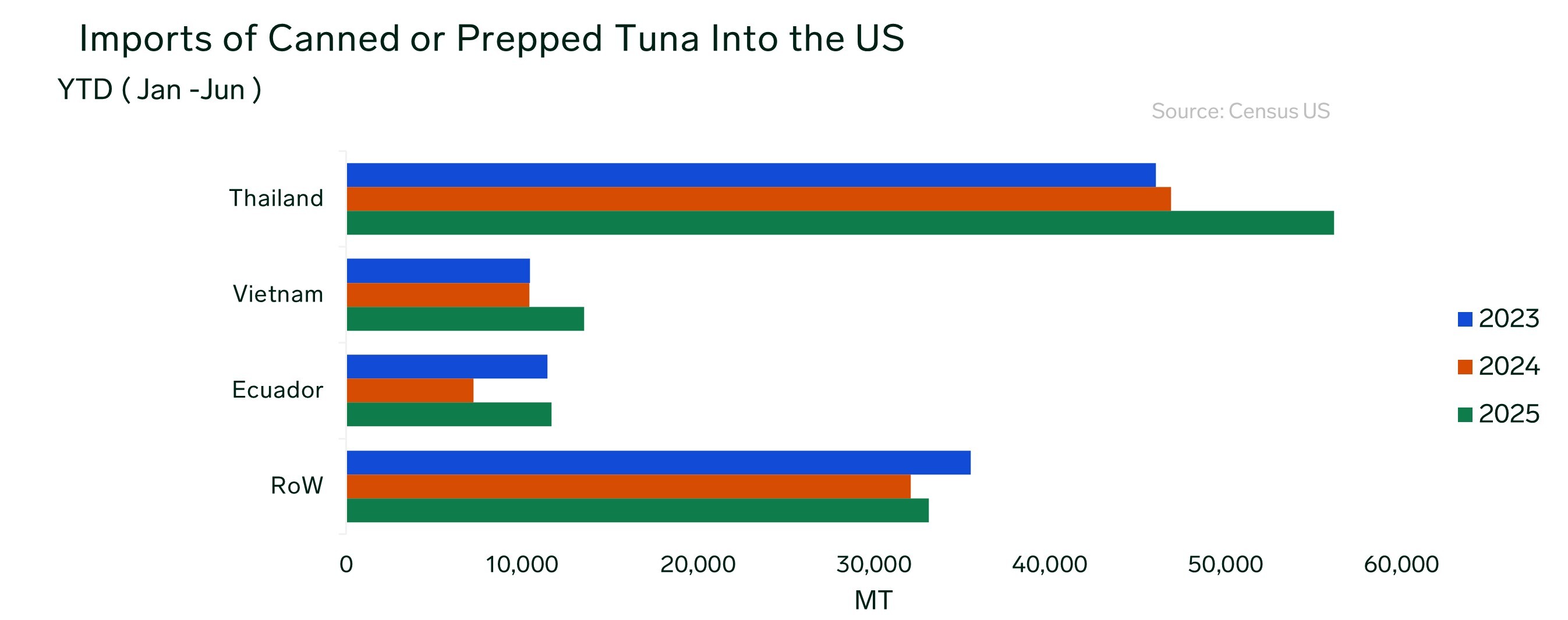The US market annually imports approximately 100,000 metric tons of canned or prepared tuna from 39 countries. As of 2024, the primary suppliers are Thailand, Vietnam, and Ecuador, with market shares of 48.5%, 10.8%, and 7.5%, respectively.

Fig1. Year-to-date (Jan-Jun) import of canned or prepped tuna into the US in metric tons. Source: Census US
Prior to the introduction of reciprocal tariffs, there was a differential tariff structure based on the type of canned tuna: 6% for canned tuna in brine or water and 35% for canned tuna in oil, as noted in the United States International Trade Commission’s 2025 Harmonized Tariff Schedule. However, this base rate can vary depending on existing trade agreements.
The initial proposal for reciprocal tariffs suggested rates of 36% for Thailand, 46% for Vietnam, and 10% for Ecuador. According to an announcement from the White House on July 31, 2025, the finalized tariff structure is as follows:
| Country | Reciprocal Tariffs July 31, 2025 |
| Thailand | 19% |
| Vietnam | 20% |
| Ecuador | 15% |
These new tariff conditions may influence existing trade trends for canned tuna in the US. In recent months, the market for skipjack tuna in Thailand has been unstable due to uncertainty surrounding US tariffs. The latest price for the Thai skipjack, according to the Expana Benchmark Prices, was assessed at $1,550 per metric ton at the end of July, marking a 3.3% month-over-month increase. Market participants have indicated that the main drivers for this price increase include the ongoing Fish Aggregating Device (FAD) ban, which will continue until August, and a slowdown in landings. Additionally, purchasing activities for canned tuna in Thailand have been affected in recent months by negotiations related to US tariffs.
Conversely, a noted increase in purchasing activity was observed in the US ahead of the imposition of reciprocal tariffs (Figure 1), leading to an overall increase in canned tuna imports by 18.5% year-to-date (January to June). Among the top three sources, imports from Thailand, Vietnam, and Ecuador rose by 19.8%, 30.0%, and 61.6%, respectively.
Image source: Shutterstock
Written by Boris Ampuero




